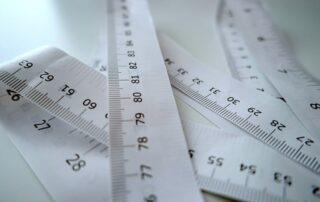Blogs
Capacitance Guide for Industrial Applications
Accumeasure Digital Capacitance System D Series Gen 3 View Product Capacitance Displacement and Gap Measurement Probes View Product Accumeasure Analog Capacitance System View Product Basic Principles Capacitance is the ratio of the change in an electric charge to the corresponding change in its electrical potential (i.e., voltage). Capacitors, components that that have the “capacity” to store an electric charge, consist of conductive parallel plates that don’t touch or connect with each other. Instead, these metal plates are electrically-separated by air or a layer of insulating material (i.e., the dielectric). MTI’s technology [...]
Increase SiC Wafer Production Yield
Demand for SiC wafers is growing rapidly and production needs to keep up. Speeding up production can result in higher defect rates without the proper inspection equipment in place during the R&D process, where poor verification of your process tools can dramatically reduce yield. MTI Instruments 300iSA system can help measure TTV, flatness, bow and warp of up to 20 wafers per hour. Our solution helps you perform wafer inspection verifications at scale and increases the throughput of your production yield as the demand grows for 100-200mm diameter wafers. Finding defects at volume can be difficult, but MTI’s superior [...]
PBS Product Training
PBS Product Training Download Brochure Get your team up and running quickly with on-site training specific to your environment and engine type with MTI’s premier training program. With proper training, a post maintenance engine vibration test should be reduced to two hours or less; versus manual methods which require several hours of effort and thousands of pounds’ worth of fuel. MTI’s on-site training program can be used for up to 16 hours of credit towards the FAA’s William O’Brien Aviation Maintenance Technician Awards Program and be eligible to receive the Bronze Award level. • Customizable [...]
15 Measurement Activities for Students
Image Source: Pixabay 15 Measurement Activities for Students Written by: Tiffany Chambers Did you know we measure things every day without realizing we do so?Whether we’re measuring how much sugar to add to a cake or figuring out how many more miles we can drive before our car needs an oil change, we’re constantly measuring things. Allowing your children and students to measure alongside you will prepare them for the real world. We assembled a list of fun measurement activities for your kids right at home and in the classroom. These activities require little in terms of [...]
Selecting a Displacement Sensor / Measuring System
Capacitive displacement sensors Capacitive displacement sensors are non-contact devices that are used for measurements at a high-resolution. It can also be used to check the position of any conductive object as well as measure the width or density of non-conductive materials. Capacitive displacement sensors have a large variety of uses including precision thickness measurements, assembly line testing, assembly metrology, and semiconductor processing. Capacitive displacement sensors can be found in manufacturing facilities all around the globe. There’s more to selecting the proper type of displacement sensor and measurement system than meets the eye. To select the appropriate type of device [...]
International System of Units (SI)
International System of Units (SI)
Target Material and Characteristics
Target Material and Characteristics Transparent/Opaque Targets There are a number of measurement systems that are capable of measuring a target that is opaque. When it comes to transparent targets, the measurement system being used must match the material of the target being measured. For example, if you’re attempting to measure plastic you should use a contact-type measurement system such as a micrometer. When performing a soft target measurement, such as film, a non-contact measurement system (such as a laser displacement sensor) should be utilized. Hard/Soft Targets Objects made out of hard material (such as a block of wood), would [...]
Tolerance and Measurement Accuracy
Tolerance Tolerance refers to the total allowable error within an item and is specifically represented with the symbol +/-. During the manufacturing process it’s almost inevitable that items on the line can become damaged at one point or another. Products can face damage in multiple ways. For instance, changes in temperature and humidity can cause a product to become warped and disfigured. Warping can also occur if there’s improper feedback from the process control device. No matter the reason, it has become necessary to take any and all errors into consideration during the manufacturing and inspection processes. When used [...]
What is Measurement?
Measurement is about determining the quantifiable attributes of a target object. Examples of these attributes include: length weight distance thickness position capacity size The following sections explain more about what measurement is – and isn’t. Why is measurement misunderstood? Sometimes, people use the term “measure” instead of “calculate” or “quantify”. All these terms are related, but they’re not the same. For clarity’s sake, think of measurement as a single action that you perform with instrumentation. Collectively, “instrumentation” describes devices (i.e., instruments) that measure, indicate, and sometimes record values. Today, there are many different types of specialized measuring instruments. Bakers [...]
What is a displacement sensor?
What are Displacement Sensors (Displacement Gauges) and Dimension Measurement Systems? What is a displacement sensor? A displacement sensor (displacement gauge) is primarily used to measure the range of where an object has to travel and in relation to a reference position. Displacement sensors have multiple uses. Its primary use is for dimension measurement to figure out an object’s width, height, and thickness. Accuracy, application and usage environment is required when selecting the best equipment. What is a measurement sensor? A measurement sensor is a device that is used to measure an object to ascertain its dimensions such as by [...]




